Reasons to love fashion, number 567: women setting the agenda is the norm, not a stunt pulled by men in order to grab headlines. The bucket hat may have been staging a respectable comeback in menswear circles for two years, but it was Rihanna who had the power to make it a bona fide headline trend once more. RiRi's Sunday-night instagrams, showing her in a bucket hat and red lipstick with one arm draped around German striker Mario Götze, were the style moment of the final.
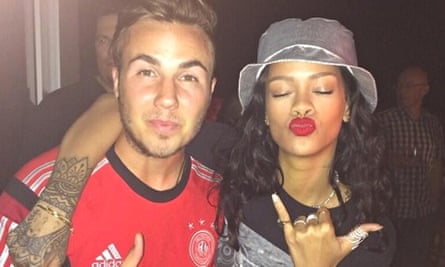
Rihanna's bucket-hat moment blew Gisele Bundchen's pre-match appearance – big hair, teeny dress, Louis Vuitton trophy case – out of the water. This is no mean feat, but what Rihanna has on her side and Gisele doesn't (beside the winning team, of course) is the zeitgeist. Because the Rihanna bucket-hat look both captures the tomboy mood of the moment, and capitalises on a 90s revival that has hit the mass market this year. Rihanna chooses a bucket hat when she's watching sports: before the World Cup final, she had been photographed courtside at basketball games in a camo-print bucket hat and a floral-print version. Every time, she styles the hat with a mix of tomboy swagger and girly glamour. There is usually a vintage, boyish T-shirt worn with the hat, but also leggy shorts. She wore pearl earrings and flicked black eyeliner with the camo and floral hats, and her scarlet lipgloss is immaculate even in the late blur of the post-World-Cup shots.

The bucket hat has tomboy heritage. Think Lauren Hutton, all gappy teeth and open-neck linen shirt. Lauryn Hill and British rapper Monie Love wore them in the 1990s, making a statement by tipping their hats to LL Cool J in his Kangol, and the Sugarhill Gang before him. Isabel Marant, fairy godmother of modern girl-meets-boyish charm (those concealed-wedge high-tops are a case in point) had them on her catwalk all the way back in 2005; supermodel Anja Rubik wore one on the cover of Spanish Vogue last June. Whistles featured a pink-and-black version in its collection for this summer, styled for the catwalk with a cropped sweater, wide-legged trousers and high sandals.
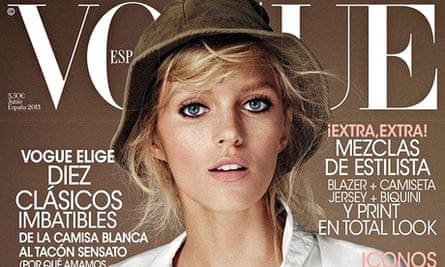
Long, high-glamour hair is a key signifier of femininity. At this summer's festivals, the beanie hat is still the edgy choice, while the mainstream look for young women is the floral hair garland. The Lana Del Rey/Frida Kahlo supersized, floral-crown at least has fancy-dress impact, but this is inevitably diluted when there is one every few paces. And more numerous by far at festivals in 2014 – from Coachella to Glastonbury - is the silk flower garland, as worn by six-year-old bridesmaids everywhere. This is a truly inexplicable trend, since (a) no self-respecting female over the age of nine would be seen dead in one, so WHO ARE THESE PEOPLE? and (b) festival sites were once the holy places of our countercultures, so why would you dress as if for a country wedding in 1982?
In a culture where girly hair is still so glibly celebrated, anything that covers it up is a statement – see also, Cara Delevingne in a beanie – but a bucket hat is almost the most deliberately subversive. From unpromising beginnings – it is, after all, the hat worn by babies, fisherman and Woody Allen – it has come to represent an anti-establishment, hard-partying attitude. There is something about its complete lack of poise that makes it representative of a particularly stubborn, don't-care-what-you-think stance: think of its devotees, from Hunter S Thompson and Liam Gallagher to RiRi herself. This is a hat with no pretensions to chic, which is why it will always be a Marmite garment. The person wearing a bucket hat doesn't care what you think of their look. That's the whole point.
Jess Cartner-Morley
Why menswear is mad for it – again
So bucket hats are back. Ubiquitous, in fact, spotted on Pharrell and Frank Ocean and on menswear catwalks by designers ranging from Christopher Shannon to Craig Green to Burberry. It is all a bit worrying, considering how quickly most of us realised they looked ridiculous back in the day. Even AJ from the Backstreet Boys swapped his for a nice trilby within months.
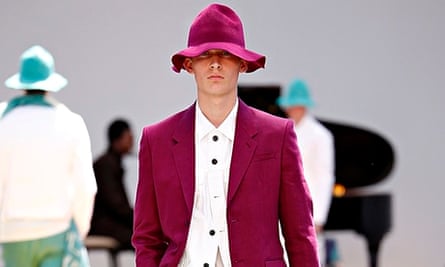
The bucket hat for men came of age in the 90s, wafting in the same musk-scented wave as Loaded and Damien Hirst. The hat was favoured by Reni from the Stone Roses and had a dual purpose. The first was to make the wearer seem as if they could be in Glastonbury's Shangri-La field making double-barrelled finger guns as the Soup Dragons played I'm Free. The second was to send out the message that the wearer "didn't really care about fashion, you know". The latter was key for any teenage boy who didn't want to be charged with the cardinal sin of Trying Too Hard.
Perhaps the biggest proponent of the look was Liam Gallagher. At the height of the Britpop wars, the clothes one wore were a show of musical allegiance. Musically, I was firmly in the Blur camp but clothes-wise I was Switzerland: I looked like an unpaid extra from My So Called Life, sporting oversize plaid shirts and unmentionable denim jeans "with a twist" (as if anything needed a twist in it, except for your drink). At a stretch, I was Debbie from Echobelly. I had a friend who was a self-confessed Oasis fan (he actually went to Knebworth. We don't speak about it now) and sported a battered grey and baby blue Kangol bucket hat in tribute to Liam Gallagher. But even he didn't wear it for more than a year or so. For him, as for all of us, bucket hats had become a victim of their own ubiquity, so linked with "mad fer it" posturing that they became a parody. The last time most of us Brits remember them being worn was by Kevin and Perry.
It might seem odd, then, that the resurgence of the trend has been spearheaded by a musical faction far away from 90s indie rock. Long before the hats made it to Burberry's catwalk the bucket hat had, like Phil Collins, been taken to rap's bosom, with the wearers of today (including Schoolboy Q, who rapped "Brought the gangsters back to bucket hat, how real is that?", as well as Rick Ross, Earl Sweatshirt and A$AP Ferg) referencing the Def Jam heyday of Run DMC and LL Cool J.
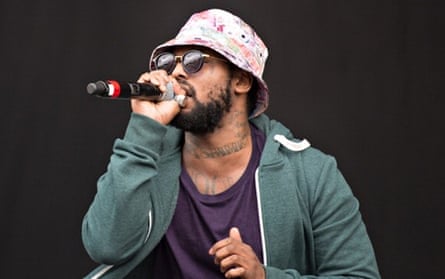
And so the modern bucket hat has come to express a strange mix of sartorial statements: the most "norm" of normcore looks combined with humour and a note of gangster toughness. Ideal for pop stars who are attempting to coarsen a previously squeaky-clean image (Justin Bieber, Chris Brown) and also for men who commit to their hats like serial monogamists (the school of: why take it off ever? I can't remember what my hair looks like). On a personal note, as a new dad who needs something to top off a look that says: "Oh God, just grab anything without sick on it!" it's pretty appealing, too. If you can get past the Kevin and Perry factor, I have to admit it: bucket hats kind of work.
Priya Elan
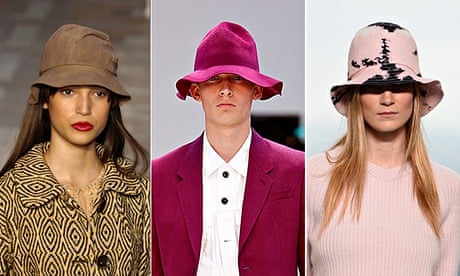
Comments (…)
Sign in or create your Guardian account to join the discussion